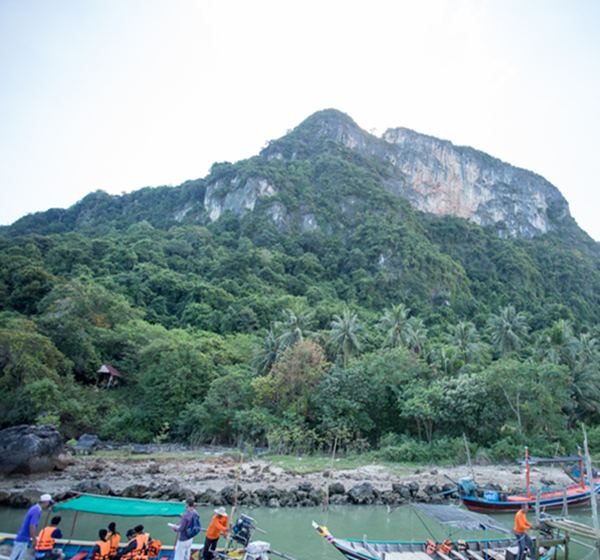
History of Nangkam
Over the past 180-200 years, there have been villages in the Gulf of Thailand in the southern part of Thailand. There is Chang Mountain on the east and the Tok Mountain on the west. There is a village called "Ban Nangkam". The front of the village is attached to the Gulf of Thailand in the north, and the rainforest in the south. It is located in Moo 7 Tambon Tongnean Khanom district, Nakhon Si Thammarat province. After 20 November 1982, Ban Nangkam was under the region of Moo 10 Tambon Donsak, Donsak District, Suratthani because it is a shorter distance to travel to the district office (To Donsak distance 8 km, to Khanom distance 25 km). Ban Nangkam can be divided into 3 eras as follows :
- NangKham Era : The time when Mrs. Kham was the first family to migrate into the village of Nangkam. It is assumed that these people migrated from Nakhon Si Thammarat province. Later, more and more people migrated to live in the area. Most of them migrated from areas nearby such as Khanom district, Nakhon Si Thammarat province and DonSak district, Suratthani which is the border line. Afterwards the name of the village "Nangkam" would be formed the name "Nang Kham".
- Overseas Chinese Era (bark era) : Chinese people migrated from China by barks during the cultural revolution in China, and move to settle in the area of Klongtum (Roolet) with fishing and rice farming careers. Later, these groups migrated to Ban Nangkam village and neighboring areas due to the problem of fresh water used in consumption.
- 3. Samui – Phangan Era: The price of coconuts is falling and the population is increasing. Some people on Koh Samui - Phangan immigrants move on the mainland to find a land for agriculture, and some people migrate to settle at Ban Nangkam. (Due to the nearest mainland being close to Koh Samui - Phangan)
Nowadays, although the transportation is convenient and the migrant population is more diversified, people in Nangkam village still today maintain the traditional way of life and culture.